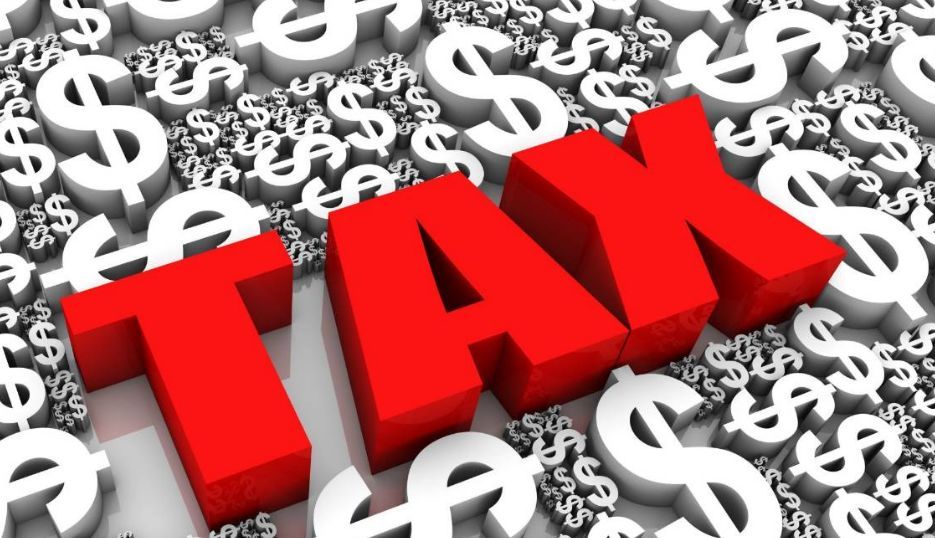
Market Focus
U.S. stocks had their biggest slide in five weeks after President Joe Biden was said to propose almost doubling the capital-gain tax for the wealthy. The dollar advanced.
The S&P 500 turned lower after Bloomberg News reported that for those earning $1 million or more, the new top rate, coupled with an existing surtax on investment income, means that federal tax rates for rich investors could be as high as 43.4%. Speculation arose that some traders may sell shares before any change is made to capture the lower rate.
Equities whipsawed throughout the session amid mixed economic data and renewed concern the pandemic was worsening. All major groups in the S&P 500 fell, led by material, energy, and tech shares. AT&T Inc. jumped after beating earnings estimates. Intel Corp. — the biggest chipmaker — slid in after-hours trading as it reported a drop in data-center revenue and a steep slump in gross profit margin.

Elsewhere, Bitcoin declined for the sixth time in seven days, extending losses after the higher capital gains proposal was revealed. Investors already face a capital gains tax if they hold the cryptocurrency for more than a year.

Main Pairs Movement
The dollar rose as reports of President Joe Biden considering almost doubling the capital gains tax rate weighed on risk appetite, with U.S. stocks headed for worst day in four weeks. The euro slipped after the European Central Bank confirmed that it was not yet discussing a phase-out of its emergency bond purchases. U.S. 10-year bond yields slid for a third day, edging lower to 1.55%; U.S. stocks headed for their biggest drop since mid-March.
Here are the takeaways from the ECB decision and news conference.
- The ECB kept policy steady as widely expected, confirming that the latest incoming information pointed to a continued need for “significantly higher” emergency bond purchases;
- Pressed on whether the last weeks’ purchase figures really constituted a “significant” increase, President Christine Lagarde stressed the focus must be on monthly numbers, rather than weekly;
- She also said it would be premature to discuss phasing out the crisis tool, and offered a downbeat assessment of the short-term risks to the economy. A number of analysts expect buying to slow again in the third quarter;
- Lagarde highlighted that she doesn’t see the ECB and the U.S. Federal Reserve moving in tandem, as the two economies are “not on the same page”;
- Market moves were limited, with the euro erasing again to trade around 1.2026 versus the dollar; German and Italian bonds also reversed earlier.
USD/JPY is little changed at 108.09, dropped as much as 0.2% as Tokyo Governor Yuriko Koike sought to reimpose a state of emergency. NZD/USD sinks 0.8% to 0.7159 to be the worst performer in G10. The kiwi’s decline was led by sales against the Aussie, according to an Asia-based FX trader. AUD/NZD snapped a three-day drop to rise 0.1%.
Technical Analysis
EURUSD (4 Hour Chart)

The European Central Bank had a monetary policy meeting. As widely anticipated, European policymakers decided to leave the rate unchanged. President of ECB said it would be premature to discuss phasing out the crisis tool, and a pessimistic assessment of the short-run risks to the economy. On the technical side, the RSI indicator has fallen below the neutral line to 49.7 figures as of writing, suggesting a shred of bearish movement. On the other hand、, the 15-long SMA indicator turn side to south way but the 60-long SMA indicator remains north way.
On price action, it is obvious that the eurodollar attains strong downside support after correction to 1.199 level a couple of times. As the mixed information, we foresee the market still have a north side chance. However, poor indicator suggestion is pinning the marketplace. Therefore, 1.19 is still a vital first support level that needs immediately to be defended. If penetrate downward further, 1.192 will be the next support level.
Resistance: 1.2071, 1.2106
Support: 1.199, 1.192, 1.1877
GPBUSD (4 Hour Chart)

At the time of writing, the pound slip to 1.3839. It seems lost the gravity that down from 1.9349 to low 1.3826 while U.S. session. In imminent sessions, UK Retail Sales is due on Friday, along with the flash PMIs data. Reuters reported that “British manufacturing’s expectations of an economic rebound rose to highest since 1973 this month as the country began recovery from COVID-19 pandemic”. However, we need to faint wary of UK PM was warning the next pandemic wave probably forthcoming.
For the RSI side, the indicator has dropped to 37.8 figures, suggesting a bearish momentum ahead. From on price average perspective, 15-long SMA turns negative slope whilst 60-long SMA retains upward movement. Currently, we see the price has plummeted over the former critical support level at 1.39 which is the neckline of a previous double bottom. Therefore, we expect the market will choppy in a tiny range between first resistance and support gauge. On the slid way, if consecutive go down after 1.3822 level, it could induce continuously downward movement.
Resistance: 1.4, 1.3959, 1.39
Support: 1.3822, 1.3796
XAUUSD (4 Hour Chart)

Gold stopped the previous two days’ snap up the momentum that slipped to alongside 15-long SMA indicator; at the meantime, 15 and 60-long SMAs indicator are remaining the ascending trend. The gold market has been dragged down by overwhelming greenback after U.S. president Joe Biden wants to rose the tax. For the RSI view, an indicator shows 56 figures as of writing which suggests a glimmer of bullish momentum.
All in all, we still feel optimistic about the upcoming market bull movement. Therefore, if we have to keep upward momentum, any correction needs to stop at the $1759.7 level on slid way.
Resistance: 1800.7, 1812.8
Support: 1759.7, 1754.5, 1722.75



